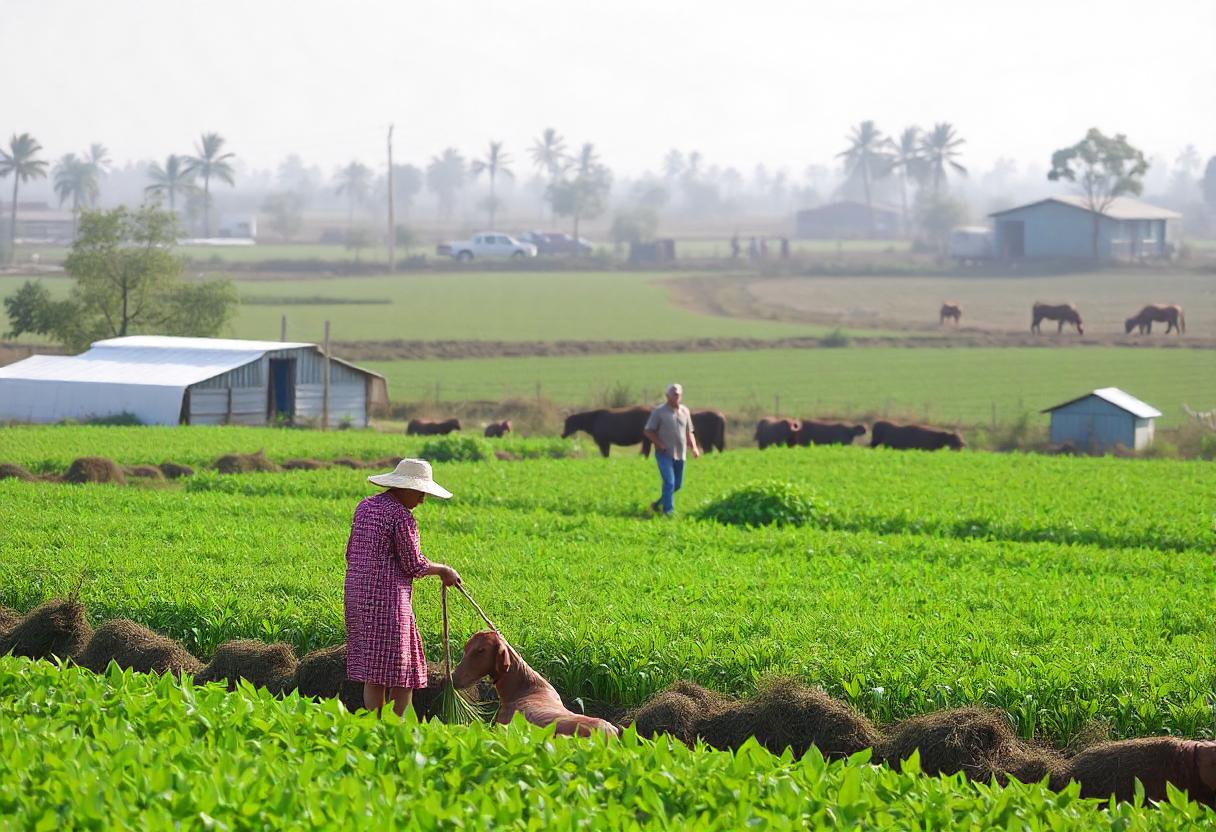
Introduction
Commercial farming, also known as industrial agriculture, is a method of farming that focuses on the large-scale production of crops and livestock for profit. Unlike subsistence farming, where the primary goal is to meet the needs of the farmer’s family, commercial farming aims to produce surplus food and goods to be sold in the market. This approach involves advanced techniques, technologies, and substantial investments to achieve high yields and efficiency.
Historical Context
The evolution of commercial farming dates back to the Agricultural Revolution, which began in the 18th century. This period marked significant advancements in farming techniques and technology, leading to increased agricultural productivity. Innovations such as the seed drill, crop rotation, and selective breeding set the stage for modern commercial farming practices.
Key Characteristics of Commercial Farming
- Large Scale Operations: Commercial farms operate on large areas of land. The size of these farms allows for economies of scale, which means that the cost per unit of production decreases as the scale of output increases.
- Use of Technology: Modern commercial farming employs advanced technologies, including precision agriculture, automated machinery, and data analytics. Technologies like GPS-guided tractors, drones, and sensors help optimize planting, irrigation, and harvesting processes.
- Specialization: Commercial farms often specialize in a single type of crop or livestock. Specialization allows for the efficient use of resources and maximizes output. For example, a farm might focus exclusively on growing corn or raising cattle.
- Capital Intensive: Commercial farming requires significant financial investment. This includes the costs of purchasing land, machinery, seeds, fertilizers, pesticides, and other inputs. The financial stakes are high, with the potential for substantial profits but also significant risks.
- Market Orientation: The primary goal of commercial farming is to produce goods for sale in the market. Farmers are motivated by market prices and demand, which influences their decisions on what crops to plant or livestock to raise.
- Labor Efficiency: Commercial farming relies heavily on mechanization and technology to reduce the need for manual labor. This efficiency helps in managing large-scale operations and maintaining high productivity levels.
Types of Commercial Farming
- Crop Farming: This includes the large-scale production of staple crops such as wheat, corn, soybeans, and rice. Commercial crop farming often involves monoculture, where a single crop is grown extensively over a large area.
- Livestock Farming: This involves raising animals such as cattle, poultry, pigs, and sheep for meat, milk, and other products. Commercial livestock farming focuses on maximizing meat or milk production through intensive breeding and feeding practices.
- Dairy Farming: A specialized form of livestock farming, dairy farming is focused on producing milk and dairy products. Commercial dairy farms use advanced technologies for milking, feeding, and breeding to enhance production efficiency.
- Poultry Farming: This includes the large-scale production of chickens, turkeys, and ducks for meat and eggs. Commercial poultry farms use controlled environments and specialized feed to optimize growth and egg production.
- Horticulture: Commercial horticulture involves the large-scale production of fruits, vegetables, and flowers. Techniques such as greenhouse cultivation and hydroponics are often used to maximize yield and quality.
Advantages of Commercial Farming
- Increased Productivity: Commercial farming techniques significantly increase the yield per acre, contributing to food security and availability.
- Economic Growth: Commercial farming can drive economic growth by creating jobs, stimulating local economies, and contributing to export revenues.
- Technological Innovation: The need for efficiency and productivity has led to advancements in agricultural technology, benefiting the industry as a whole.
- Economies of Scale: Larger operations benefit from reduced costs per unit of production, making it more economical to produce goods in bulk.
Challenges of Commercial Farming
- Environmental Impact: The intensive use of chemical fertilizers and pesticides can lead to soil degradation, water pollution, and loss of biodiversity. Large-scale operations can also contribute to deforestation and habitat destruction.
- Resource Depletion: Commercial farming can lead to the overuse of natural resources such as water and soil, impacting long-term sustainability.
- Animal Welfare Concerns: Intensive livestock farming often raises ethical concerns related to animal welfare, including issues of confinement, overcrowding, and humane treatment.
- Economic Risks: The high capital investment and market dependency expose commercial farmers to economic risks, including price fluctuations and market volatility.
- Health Risks: The use of antibiotics and growth hormones in livestock farming can lead to concerns about food safety and human health.
Future Trends in Commercial Farming
- Sustainability Practices: There is a growing emphasis on sustainable farming practices, including the use of organic fertilizers, integrated pest management, and conservation tillage. These practices aim to reduce the environmental impact of commercial farming.
- Precision Agriculture: Advancements in data analytics and technology are leading to more precise and efficient farming practices. Precision agriculture involves using data-driven insights to optimize farming practices and resource use.
- Vertical Farming: Vertical farming, which involves growing crops in stacked layers or vertically inclined surfaces, is gaining traction as a solution to space constraints and resource use in urban areas.
- Genetic Engineering: The use of genetically modified organisms (GMOs) is expected to continue growing, with advancements in crop and livestock genetics aiming to enhance productivity and resilience.
- Agroecology: Agroecology integrates ecological principles into farming practices, promoting biodiversity and sustainability while maintaining productivity. This approach seeks to balance economic, environmental, and social goals.
Commercial farming plays a crucial role in feeding the global population and driving economic growth. While it offers significant advantages in terms of productivity and efficiency, it also presents challenges related to environmental impact, resource depletion, and ethical concerns. The future of commercial farming will likely be shaped by advancements in technology, sustainability practices, and the ongoing quest to balance productivity with environmental stewardship.